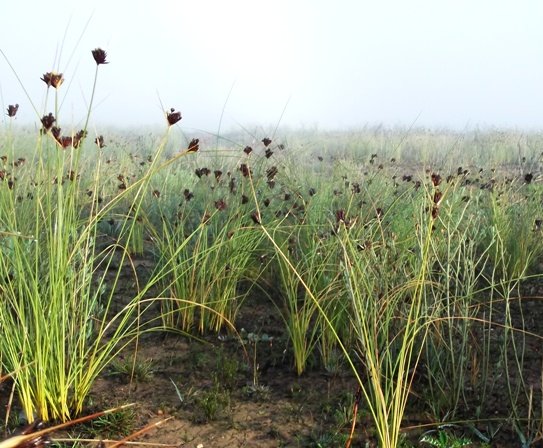Bobartia fasciculata

Author: Ivan Lätti
Photographer: Ivan Lätti
Bobartia fasciculata is one of the rush irises, evergreen perennials that grow tufts of long, sometimes cylindrical (terete) leaves from rhizomes. It looks more like a restio than an iris, especially when not in flower. The underground rhizome that survives fires, allows the plant to resprout new stems quickly from stored resources, well before reseeder plants can usually achieve size.
The flowers are seen from late winter to end spring. They are yellow, growing in terminal heads. The leaves of this species grow about as tall as the flower stalks, reaching heights around 80 cm to 1,5 m. The photo was taken at the end of May, long after flowering.
The species distribution lies in the Western Cape from around Tulbagh to Citrusdal. This stand of B. fasciculata, growing in the Elandsberg Private Nature Reserve has returned to maturity much faster than its competition after a recent veld fire.
The habitat is dry fynbos slopes and transitional renosterveld between elevations of 350 m to 750 m. The habitat population is believed to be near threatened early in the twenty first century, due to farming, especially rooibos tea plantations (Bond and Goldblatt, 1984; iNaturalist; http://redlist.sanbi.org).

